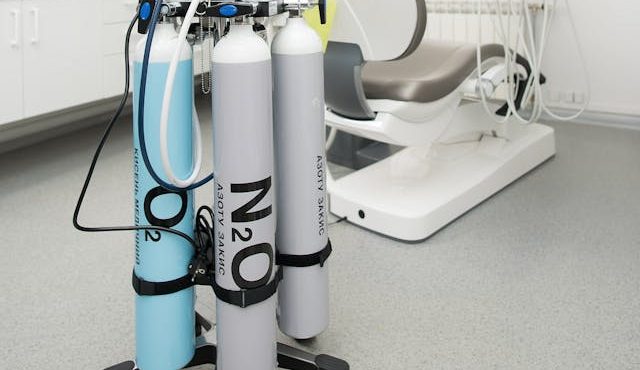Transporting gas cylinders, such as oxygen cylinders used for welding or other applications, requires careful attention to ensure safety and prevent accidents. Improperly secured cylinders can shift, fall, or even cause damage during transit. Here’s a practical guide to securely transport your gas cylinders using a well-designed storage case for transporting oxygen cylinders.
Understanding the Risks
Gas cylinders are heavy and can be unstable if not properly secured. When transporting them in a truck bed or similar vehicle, the risk of movement increases, especially if the cylinders are not adequately restrained. Standard straps may not be sufficient, as they can slip or become loose, leading to potential accidents. Ensuring that your cylinders are firmly secured is crucial to maintaining safety on the road.
Creating a Secure Storage Case
One effective method to secure gas cylinders is by building a custom storage case for transporting oxygen cylinders. This case helps to stabilize the cylinder and reduce the risk of movement. Here’s a step-by-step guide to creating a storage case that will keep your cylinders safe during transport.
1. Build the Saddles
Begin by constructing saddles to support the base of the cylinder. Use sturdy 2×6 wooden planks for this purpose. Cut the planks to length and then bevel the edges at a 45-degree angle. This angled cut will help the saddle better grip the cylinder.
Once the planks are cut and beveled, cut them in half to create two pieces for each saddle. Measure the distance needed for the base of the cylinder to ensure a snug fit. Typically, this will be just over 17 inches, but adjust based on your cylinder’s size.
Attach these planks to a base using screws. Pre-drill holes and secure the planks with 2.5-inch screws. This will create a stable rest for the cylinder and increase friction, preventing it from shifting during transit.
2. Position the Saddles
Place the saddles in the truck bed or transport area where the cylinder will be located. Ensure that the saddles are positioned correctly so that the cylinder sits securely on top of them. The wooden saddles should provide a stable surface, reducing the cylinder’s tendency to slide or tip.
3. Secure with Straps
Next, use heavy-duty straps to secure the cylinder to the storage case. Traditional methods of strapping can sometimes be inadequate due to slipping or loosening during transit. To improve the effectiveness of your straps, route them carefully around the cylinder and use D shackles instead of standard ones.
D shackles offer straight edges that reduce stress on the straps, creating a more secure hold. Run the strap underneath the cylinder and loop each end through the D shackle. Tighten the strap to pull the cylinder down and into the saddle. Ensure that the strap is evenly distributed and that it pulls the cylinder tightly against the base.
4. Check and Adjust
Once the cylinder is secured with the straps and D shackles, check the stability of the setup. The cylinder should not move side-to-side or shift in any direction. If there is any movement, adjust the straps and saddles as needed to enhance stability.
5. Enhance the Storage Case
For additional security, consider adding padding or non-slip materials between the saddles and the truck bed. This can further prevent movement and protect the cylinder from damage. Ensure that the entire storage case for transporting oxygen cylinders is free from any loose components that could potentially interfere with the straps.
Why Investing in a Storage Case is Better Than DIY
While building a custom storage case for transporting oxygen cylinders can be a viable solution, investing in a professionally designed storage case often offers superior benefits. Here’s why:
- Precision Engineering: Professional storage cases are designed with precise measurements and features tailored to secure gas cylinders effectively. They often include specialized compartments, padding, and securement points that a DIY shttps://www.americase.com/product/oxygen-cylinder-cases/olution may lack.
- Durability and Safety: Commercially available storage cases are made from high-quality materials that are tested for durability and safety. These cases are built to withstand the rigors of transport and provide enhanced protection for the cylinders, reducing the risk of accidents and damage.
- Compliance with Regulations: Many professionally designed storage cases comply with safety regulations and industry standards. This ensures that your transport method meets legal requirements and provides an additional layer of safety.
- Time and Effort Savings: Investing in a ready-made storage case saves time and effort compared to building one yourself. Pre-fabricated cases are often easier to use and adjust, allowing for a quicker and more efficient setup.
- Consistent Performance: Commercial storage cases are tested for consistent performance in securing cylinders. DIY solutions may vary in effectiveness and may not provide the same level of reliability.
In conclusion, while creating a custom storage case for transporting oxygen cylinders can be a practical solution, investing in a professionally designed storage case often offers enhanced safety, durability, and convenience. Whether you choose to build your own or purchase a commercial case, ensuring that your cylinders are securely transported is essential for maintaining safety and preventing accidents.

